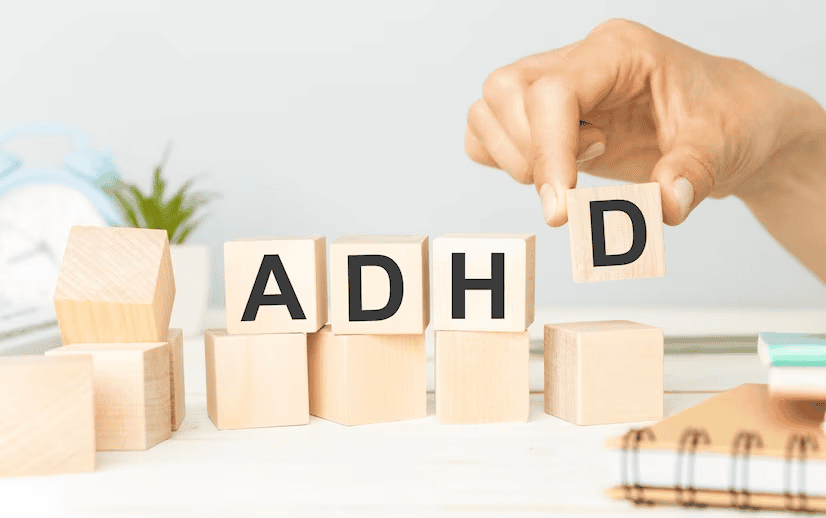ADHD behavioral therapy plays a vital role in helping individuals effectively manage the symptoms of Attention-Deficit/Hyperactivity Disorder (ADHD). Focusing on behavior modification and skill-building, this therapy aims to enhance attention, impulse control, and overall functioning. In this blog post, we will explore ten key strategies that are commonly employed in ADHD behavioral therapy. From psychoeducation and behavior modification techniques to parent training, classroom strategies, and mindfulness practices, these strategies offer valuable tools for individuals with ADHD and their support systems. Let’s delve into these essential strategies to empower and improve the lives of those affected by ADHD.
Understanding ADHD Behavioral Therapy
ADHD behavioral therapy is a targeted approach aimed at helping individuals with Attention-Deficit/Hyperactivity Disorder (ADHD) manage their symptoms and improve their overall functioning. This therapeutic approach focuses on modifying behavior patterns, developing coping strategies, and enhancing specific skills. By understanding the principles and techniques of ADHD behavioral therapy, individuals with ADHD and their support networks can effectively navigate the challenges associated with the condition and foster positive changes in their daily lives.
The Role of Behavioral Therapy in ADHD Treatment
Behavioral therapy comprehensively treats Attention-Deficit/Hyperactivity Disorder (ADHD). It complements other interventions by addressing specific behaviors, enhancing coping mechanisms, and promoting skill development. By targeting behavior patterns and implementing effective strategies, behavioral therapy empowers individuals with ADHD to manage their symptoms better and improve their overall quality of life.
Key Strategies for ADHD Behavioral Therapy
Strategy 1: Psychoeducation and Understanding ADHD
Educating individuals with ADHD and their families is crucial for several reasons. It helps individuals understand their experiences, reduces self-blame, and promotes self-acceptance. For families, education fosters empathy, improves communication, and equips them with the knowledge to provide effective support and accommodations. Here are some strategies for improving awareness:
- Providing Accurate Information: Offering clear and reliable information about ADHD, its symptoms, and its impact helps dispel misconceptions and reduce stigma.
- Utilizing Educational Resources: Reputable ADHD resources improve understanding and offer practical strategies for managing symptoms.
- Seeking Professional Guidance: Healthcare professionals offer expert guidance, information, and strategies for understanding ADHD.
- Joining Support Groups: Support groups offer a supportive network for individuals and families with ADHD.
- Psychoeducational Programs: ADHD-specific psychoeducational programs provide structured learning, skill-building exercises, and strategies for managing symptoms.
Strategy 2: Behavior Modification Techniques
Behavior modification techniques are a key component of ADHD behavioral therapy. They focus on identifying and modifying specific behaviors associated with ADHD. This approach is based on the principle that behaviors can be learned and changed through consistent reinforcement and environmental modifications. Specific techniques such as:
- Positive Reinforcement: Positive reinforcement rewards individuals for appropriate behaviors using praise, privileges, or treats.
- Token Systems: Token systems reward behaviors and goals with visual positive reinforcement.
- Behavior Contracts: Behavior contracts outline specific behaviors, rewards, consequences, and expectations.
- Self-Monitoring: Self-monitoring involves tracking behaviors, thoughts, and emotions, promoting self-awareness, and identifying patterns.
- Environmental Modifications: Environmental modifications support desired behaviors and minimize distractions.
Strategy 3: Parent Training and Support
Parents play a crucial role in ADHD behavioral therapy, implementing strategies, providing support, and creating a supportive environment through training programs. Some key resources include:
- Parent Education Workshops: Workshops educate parents on ADHD, its impact, and managing symptoms, providing support and learning.
- Behavioral Parent Training Programs: Programs teach parents behavior management techniques, communication, and expectations for consistent home implementation.
- Online Resources and Support Groups: Online platforms provide parents with information, support, and resources for children with ADHD through websites, forums, and social media groups.
- Parent Coaching and Counseling: ADHD therapist provides personalized guidance, strategies, problem-solving, and emotional support for parents.
Strategy 4: Classroom Strategies and Accommodations
Creating an ADHD-friendly classroom environment is crucial for supporting the academic and behavioral needs of students with ADHD. Teachers can implement various strategies to support students with ADHD in the classroom. Here are some effective approaches:
- Clear and Concise Instructions: Clear, concise instructions aid ADHD students in understanding and following tasks by breaking them down.
- Utilizing Positive Reinforcement: Motivate ADHD students with praise, rewards, and classroom rules for a positive learning environment.
- Incorporating Movement Breaks: Short movement breaks improve ADHD students’ focus, energy release, and engagement.
- Providing Organizational Supports: Providing organizational tools for students enhances time management and task completion.
- Collaborating with Parents and Support Services: Effective ADHD support requires open communication with parents and support services.
Strategy 5: Time Management and Organization Skills
ADHD individuals require time management and organization skills for improved productivity, stress reduction, and overall functioning. Here are some techniques and tools that can help individuals with ADHD improve their time management and organization skills:
- Use of Calendars and Planners: Use calendars and planners for important dates, deadlines, appointments, and digital reminders.
- Breaking Tasks into Smaller Steps: Breaking down tasks into manageable steps enhances an effective approach, while to-do lists visualize progress.
- Setting Reminders and Alarms: Set reminders and alarms on devices to help individuals stay on track and manage time effectively.
- Time Blocking: Time blocking allocates specific slots for tasks, creating structure, and focus, reducing distractions, and improving productivity.
- Establishing Routines: Consistent routines for daily activities help individuals with ADHD establish structure, predictability, and effective task organization.
- Using Visual Cues and OrganizationalTools: Visual cues like color-coding, labels, and reminders aid in organizing materials, tasks, and spaces.
Strategy 6: Social Skills Training
ADHD impacts social interactions, causing challenges like impulsivity, focus issues, and misunderstandings. Social skills training can help individuals develop these skills for more effective social situations. Here are some strategies to improve social skills and relationships:
- Active Listening: Active listening improves communication by focusing on speakers, understanding messages, and responding appropriately.
- Perspective-Taking: Empathy and understanding developed through role-playing and discussing viewpoints.
- Emotional Regulation: ADHD individuals enhance social interactions through emotional management techniques.
- Social Problem-Solving: ADHD students enhance social conflict resolution by identifying problems, generating alternatives, and evaluating consequences.
- Non-Verbal Communication: Enhancing non-verbal communication skills through role-playing and video modeling.
- Social Scripts and Prompts: Social scripts aid in initiating and maintaining conversations for ADHD individuals.
- Group Activities and Cooperative Games: ADHD individuals benefit from group activities and cooperative games for growth.
Strategy 7: Cognitive-Behavioral Therapy (CBT)
Cognitive-Behavioral Therapy (CBT) addresses negative patterns in thoughts, feelings, and behaviors, focusing on managing symptoms, improving executive functioning, and enhancing overall well-being in ADHD patients. Here are some commonly used techniques in CBT for ADHD:
- Cognitive Restructuring: Cognitive restructuring helps individuals with ADHD develop balanced, adaptive thinking patterns, reducing self-criticism and enhancing self-esteem.
- Goal Setting and Planning: CBT for ADHD involves setting goals, creating structured plans, and breaking down large tasks.
- Time Management and Organizational Skills: CBT enhances time management and organizational skills through schedule creation, planner use, and task prioritization.
- Problem-Solving Skills: CBT helps ADHD individuals develop problem-solving skills, overcome challenges, and make effective decisions.
- Relaxation Techniques: CBT uses relaxation techniques to manage stress and anxiety and improve focus and self-regulation in ADHD patients.
- Behavior Tracking and Self-Monitoring: CBT encourages tracking behaviors and thoughts for pattern recognition, problem identification, progress monitoring, and adjustments.
Strategy 8: Mindfulness and Relaxation Techniques
Mindfulness and relaxation techniques can be valuable strategies for individuals with ADHD in managing their symptoms and improving overall well-being. There are several techniques individuals with ADHD can incorporate into their daily routines to promote mindfulness and relaxation. Here are some examples:
- Mindful Breathing: Focused breathing exercises, like deep or diaphragmatic breathing, promote relaxation, quiet the mind, and reduce stress by focusing on breath sensations.
- Body Scan Meditation: Body scan meditation promotes awareness, relaxation, and grounding by systematically observing body sensations.
- Mindful Movement: Mindful movement activities like yoga, tai chi, and walking meditation promote relaxation, bodily sensations, and mind-body connection.
- Guided Imagery: Guided imagery creates a calming mental image through visualizations, recordings, or imagination, promoting relaxation and tranquility.
- Progressive Muscle Relaxation: Progressive muscle relaxation involves systematically tensing and relaxing muscle groups, promoting overall relaxation.
- Mindfulness Apps and Resources: Mindfulness apps and online resources offer guided meditations, breathing exercises, and relaxation techniques for ADHD.
Strategy 9: Exercise and Physical Activity
Physical activity and exercise have been shown to affect ADHD symptoms positively. Incorporating exercise into ADHD treatment can be done in various ways. Here are some strategies to consider:
- Structured Exercise Routines: Structured exercise routines for ADHD individuals establish consistency, motivation, and accountability through setting goals and tracking progress.
- Variety and Enjoyment: Explore various physical activities for enjoyable, sustainable exercise, including team sports, dance, martial arts, swimming, and biking.
- Breaks During Sedentary Activities: Encourage short exercise breaks, movement, and light physical activity to improve focus and energy levels.
- Outdoor Activities: Encourage physical activities like hiking, walking, and sports for well-being and nature exposure.
- Active Transportation: Encourage walking, biking, or other forms of active transportation whenever possible. Incorporating physical activity into daily routines, such as walking or biking to school or work, can increase overall activity levels.
- Family or Group Activities: Engage in physical activities as a family or with friends. Activities promote social interaction, enhance motivation, and create a supportive environment.
Strategy 10: Support Groups and Peer Mentoring
Support networks, such as support groups and peer mentoring, play a vital role in the well-being and success of individuals with ADHD. Here are some reasons why support networks are crucial:
- Understanding and Validation: Connecting with supportive communities offers understanding and validation and reduces isolation for individuals with ADHD.
- Shared Knowledge and Strategies: Support networks facilitate sharing of information, strategies, and tips for managing ADHD, providing inspiration and inspiration.
- Emotional Support: Support groups and peer mentoring offer emotional well-being, reduce stress, and increase resilience for individuals with ADHD.
- Skill Development: Support networks provide educational resources, workshops, and guest speakers on ADHD, enhancing self-advocacy and skills development.
- Encouragement and Motivation: Peer support and personal stories of triumph can motivate individuals with ADHD to achieve their goals.
In conclusion, implementing these ten key strategies for ADHD behavioral therapy can greatly benefit individuals with ADHD in managing their symptoms, improving daily functioning, and enhancing their overall well-being. From psychoeducation and behavior modification techniques to social skills training and support networks, each strategy plays a crucial role in the comprehensive treatment of ADHD. If you or your loved one would like to explore these strategies further, don’t hesitate to contact us today at (828) 515-1246 or email us at scheduling@resilientmindcounseling.com. Our team at Resilient Mind Counseling is here to provide the support and guidance you need.














